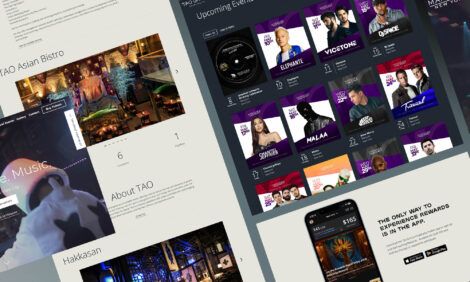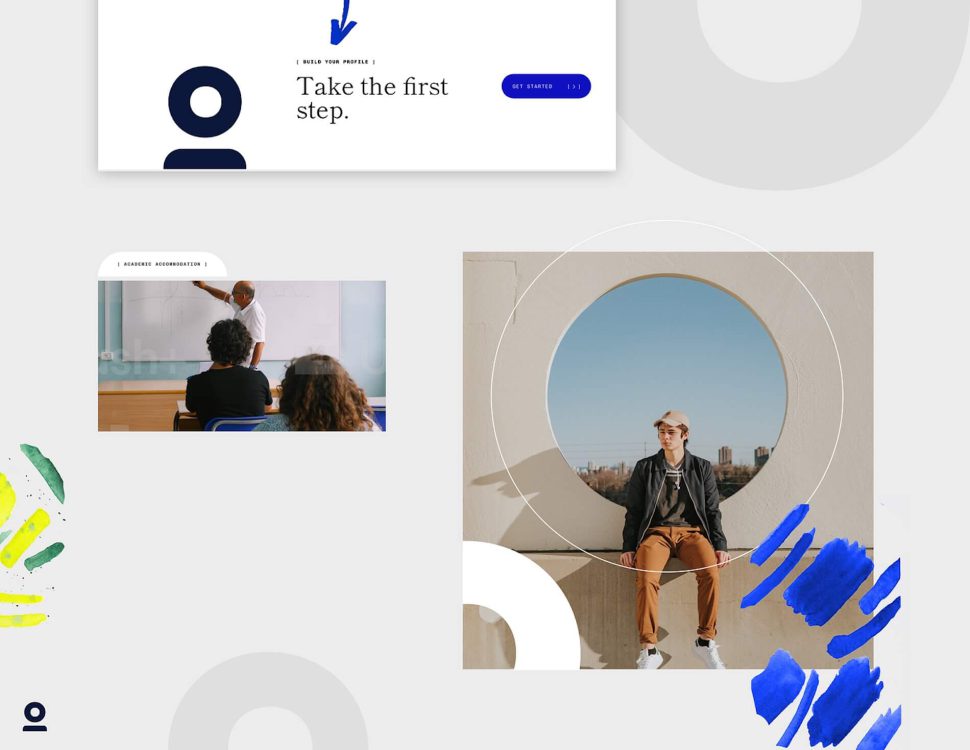September 25, 2024
Understanding the Importance of Brand and Brand Identity
- Visual Soldiers
- Branding
- minute read

In today’s saturated marketplace, standing out from the crowd isn’t just a nice-to-have — it’s crucial for survival. And a lot of that comes down to having a robust brand and brand identity. But what exactly do these terms mean, and why should you, as a business owner or marketing professional, care?
At its core, a brand is more than just a logo or a cool color scheme. It’s the feeling your company evokes in customers, the story it tells, and the promise it makes. Your brand identity, on the other hand, is the collection of visual and emotional elements that together create that feeling — think of things like your logo, color palette, typography, and even the tone of your social media posts.
Having a strong brand and brand identity isn’t just for the big players in the market. Whether you’re a small business owner trying to make your mark or a marketing professional tasked with reinventing a company’s image, understanding these concepts is key. A compelling brand can forge emotional connections with your audience, inspire loyalty, and ultimately drive your bottom line. Throughout this article, we’ll dive into the foundational elements that make up a successful brand, explore the impact of a consistent brand identity on consumer perception, and offer actionable steps to develop and strengthen your brand identity.
So stick around as we unpack what makes your brand tick and how you can leverage these insights to create a lasting impression.
Introduction to Brand and Brand Identity
Explanation of the Concepts of Brand and Brand Identity
Your brand isn’t just your logo or your company name—it’s everything that makes your company unique and recognizable to your audience. Think of your brand as the personality of your business. It’s how you present yourself to the world and how people perceive you.
Brand identity, on the other hand, is about the look and feel of your brand. It’s the visual and verbal elements that represent your company, like your logo, colors, design, and even your tagline. When people talk about the identity of a brand, they’re referring to these tangible aspects that make your business stand out.
The Significance of Having a Strong Brand and Brand Identity in Today’s Market
Having a strong brand and brand identity isn’t just nice to have—it’s essential. Think about it, with so many products and services out there, why would someone choose yours over someone else’s? That’s where brand and brand identity come into play.
When you have a compelling brand and a clear brand identity, it helps you connect with your audience on a deeper level. It builds trust and loyalty, making customers more likely to stick around and keep coming back. Plus, it makes your marketing efforts way more effective because people can easily recognize and remember you. And let’s not forget, a strong brand identity can set you apart from the competition, giving you an edge in your industry.
Key Elements of a Successful Brand
Building a successful brand and brand identity isn’t just about crafting a catchy logo or picking out fancy colors. It’s about weaving together multiple elements that tell a cohesive and compelling story about who you are and what you offer. When you think of iconic brands, what comes to mind? Perhaps, Nike’s swoosh or Apple’s clean, minimalistic look. These aren’t random choices but carefully considered elements of brand and brand identity that create a lasting impression. Here’s what you should focus on:
Logo
Your logo is often the first thing people notice about your brand. It needs to be memorable, versatile, and reflective of who you are. Think of it as your brand’s face. Whether it’s plastered on business cards, social media, or gigantic billboards, it should be instantly recognizable and synonymous with your business.
Color Scheme
Colors evoke emotions and feelings. A well-chosen color scheme can set the tone for how people perceive your brand. For example, blue often conveys trust and professionalism, while red can evoke excitement and urgency. Consistent use of your chosen colors across all marketing materials helps in establishing a unified brand identity.
Tone of Voice
How you communicate with your audience is just as important as what you say. Your tone of voice should reflect your brand’s personality and be consistent across all channels – from social media updates to customer service interactions. Whether formal, friendly, or quirky, your tone of voice helps in creating a relatable and authentic brand identity.
Typography
Just like color, the fonts you choose play a significant role in your brand’s perception. Typography helps convey your brand’s character. Clean, modern fonts might suggest professionalism and innovation, while hand-drawn fonts could imply artistry and creativity. Consistency here is key; stick to a limited set of typefaces to maintain a cohesive brand identity.
Imagery and Graphics
The photos, illustrations, and graphics you use should be consistent in style and quality. They serve as visual cues that can strengthen your brand’s story. High-quality and relevant imagery can capture attention and add a layer of depth to your overall brand identity.
How These Elements Contribute to a Uniform Brand Identity
Individually, these components (logo, color scheme, tone of voice, typography, and imagery) are powerful tools. Together, they create a symphony that forms a coherent brand and brand identity. When these elements are consistently applied across all forms of media – from your website to social media, from brochures to packaging – they create a unified look and feel.
Uniformity in brand identity doesn’t just make you look professional; it builds trust. When customers see the same visual and verbal cues every time they interact with your brand, it reinforces their perception of your reliability and attention to detail. It tells them that you’re serious about who you are and what you stand for.
Case Studies/Examples of Successful Brands with Strong Identities
Let’s dive into some real-world examples to see how successful brands have mastered their elements to create iconic identities.
Apple
Apple’s brand and brand identity are a masterclass in simplicity and elegance. From their sleek logo to their minimalist typography, every element reflects their philosophy of making technology accessible and user-friendly. Their tone of voice is confident yet approachable, making tech seem less intimidating and more exciting.
Nike
Nike’s swoosh logo is instantly recognizable, symbolizing speed and movement. Their bold color scheme and powerful imagery – think athletes pushing their limits – embody their ‘Just Do It’ spirit. Nike’s consistent and compelling brand identity has made them a global powerhouse in the sports industry.
Coca-Cola
Coca-Cola’s classic red and white color scheme and iconic script logo have stood the test of time. Their branding evokes feelings of nostalgia and happiness. Whether it’s a TV commercial or a social media post, Coca-Cola’s tone of voice is always cheerful and inviting, making you feel like you’re part of their global family.
In sum, the key elements of a successful brand aren’t just boxes to tick off a checklist. They’re integral parts of a larger, harmonious system that conveys your message loud and clear. Get these elements right, and you’re well on your way to building a robust brand and brand identity that resonates deeply with your audience.
The Role of Brand Identity in Consumer Perception
Ever thought about why some brands stick with you while others just fade away? It’s all about brand and brand identity. Trust us, it’s a game-changer. When it comes to consumer perception, how people see and feel about your brand is often influenced by your brand identity. This isn’t some abstract concept – it’s your logo, your colors, your tone of voice, and everything in between. Let’s dive into why brand identity is crucial for how consumers perceive you.
How Brand Identity Influences Customer Perception and Loyalty
Your brand identity is basically the face of your company. Think of it as that first impression you make. A strong, consistent brand identity can help you catch the eye of potential customers and keep them coming back for more. When customers recognize and trust your brand, they’re more likely to remain loyal.
Take Apple for instance. Their clean, innovative design, consistent messaging, and top-notch customer experience make them a powerhouse. Consumers know what to expect and appreciate the consistency. That trust and familiarity lead to strong brand loyalty, where customers are willing to queue up overnight for the latest iPhone or MacBook.
Another example? Coca-Cola. Their classic red logo and simple, yet powerful taglines have been synonymous with happiness and refreshment for over a century. People don’t just buy Coke for the taste; they buy it because it reminds them of good times, family gatherings, and summer picnics. That’s the power of a rock-solid brand identity.
The Psychological Impact of a Consistent Brand Identity
Humans love consistency. It’s comforting and creates a sense of predictability. When your brand identity is consistent across all touchpoints, it builds trust and recognition. This psychological reassurance can significantly influence how consumers perceive your brand.
Let’s break it down. If your business card, website, product packaging, and social media profiles all give off the same vibe, people start to associate those feelings with your brand. It’s like seeing a friend’s face in a crowd – familiar, trustworthy, and reliable. This consistency can make your brand memorable and give it a personality, which is incredibly important in a competitive market.
Strategies to Enhance Brand Identity to Shape Positive Consumer Perceptions
Looking to amp up your brand identity game? Here are a few strategies that can work wonders:
1. Define Your Brand’s Core Values
Know what your brand stands for. Are you all about innovation, sustainability, or maybe exceptional customer service? Pinning down these values can help guide your design and messaging choices, ensuring they align with what you stand for.
2. Be Consistent, Always
A consistent brand image builds trust. Make sure your logo, color schemes, fonts, and tone of voice are the same everywhere – from your website and social media to your printed materials and customer service interactions. This uniformity is vital for a coherent brand identity.
3. Engage Emotionally
Your brand identity should aim to establish an emotional connection with your audience. Think about your audience’s aspirations and desires, and reflect these emotions in your visuals and messaging. Emotions drive purchasing decisions, so harness their power!
4. Offer Quality and Value
Your products or services should deliver on the promises your brand makes. High-quality offerings can turn first-time buyers into loyal advocates, reinforcing a positive perception of your brand identity.
5. Adapt and Evolve
While consistency is crucial, don’t be afraid to evolve. The market changes, and so do consumer preferences. Keep an ear to the ground and adapt your brand identity to stay relevant. Stay true to your core values but be flexible enough to innovate and refresh your look and feel when nee
Incorporating these strategies can significantly boost how your brand is perceived. Now, if you’re a marketing professional looking to nail that brand identity, companies like Visual Soldiers can help you with expert creative services. Trust me, pros in this field know how to weave brand elements into a compelling story that resonates with your audience.
So, next time you think about why some brands seem to effortlessly maintain a positive perception, remember it’s all in the identity. A strong brand identity isn’t just a visual aspect; it’s an experience that creates lasting impressions and fosters loyalty.
Developing and Strengthening Your Brand Identity
Alright, you’ve got a business, and you understand the basics of brand and brand identity. Now, it’s time to dive into some practical steps on how to create a compelling brand identity from scratch and keep it strong over time. Let’s break it down.
Steps to Create a Compelling Brand Identity from Scratch
1. Define Your Brand DNA
First things first, what’s the essence of your brand? This means digging deep into who you are as a company. What’s your mission? What’s your vision? What values do you stand for? Define these core aspects, and you’ve got your brand DNA. Without this foundation, building a consistent brand identity is like trying to construct a house without a blueprint.
2. Know Your Audience
You can’t effectively communicate with an audience you don’t understand. Spend time researching and creating detailed buyer personas. Who are you trying to attract? What are their pain points, desires, and preferences? This knowledge will steer your brand identity in the right direction.
3. Craft a Unique Value Proposition
Your unique value proposition (UVP) is what sets you apart from the competition. What unique benefits does your brand offer? Your UVP should be clear, concise, and compelling. It’s a big part of your brand identity because it tells customers why they should choose you over others.
4. Develop Your Visual Identity
Your brand’s visual identity includes your logo, color palette, typography, and overall design style. This is where you get to have fun, but it’s also crucial to create something cohesive. Each element should work together to present a unified image to your audience.
5. Create a Brand Voice
Your brand voice is how you communicate with your audience. Is your brand witty and casual or formal and authoritative? Your tone, language, and personality should be consistent across all channels—whether it’s social media, your website, or customer service interactions.
Tips for Maintaining and Evolving Brand Identity Over Time
1. Consistency is Key
Keeping your brand identity consistent helps build recognition and trust with your audience. Make sure every piece of content and every interaction aligns with your brand’s core values and style. Use brand guidelines to ensure everyone on your team is on the same page.
2. Monitor Your Brand’s Performance
It’s vital to keep an eye on how your brand is performing. Use tools like social media analytics, customer feedback, and website analytics to measure your brand’s impact. Are people engaging with your content? Is your message resonating? This information will help you adjust your strategy as needed.
3. Stay Flexible and Adaptable
Markets change, and so do customer preferences. While consistency is crucial, you also need to stay flexible. Don’t be afraid to make adjustments to keep your brand relevant. Maybe your color palette needs a refresh, or your messaging needs to pivot to address a new market trend.
4. Engage with Your Audience
One of the best ways to strengthen your brand identity is by genuinely engaging with your audience. Respond to comments, participate in discussions, and show that there are real people behind your brand. This human connection can significantly boost loyalty and trust.
5. Seek Professional Help When Needed
Sometimes, maintaining and evolving a brand identity can be overwhelming. That’s where professional help comes into play. Companies like Visual Soldiers specialize in expert creative services to help you navigate this complex landscape and keep your brand strong and cohesive.
The Importance of Ongoing Brand Management and Adaptation
Your brand identity isn’t something you set and forget. It requires ongoing management to ensure it stays aligned with your mission, values, and market trends. This adaptive approach helps keep your brand relevant and resonant with your audience.
1. Conduct Regular Brand Audits
A brand audit helps you assess the health of your brand. Are you sticking to your brand guidelines? Is your visual identity still strong? Are there areas of improvement? Conduct these audits regularly to keep your brand on track.
2. Keep Up with Market Trends
Staying updated on market trends ensures that your brand remains relevant. Trends can influence everything from design styles to customer expectations. Incorporate relevant trends into your branding strategy to keep things modern and engaging.
3. Encourage Employee Advocacy
Your employees are brand ambassadors. Encourage them to embody your brand values and share their enthusiasm with the world. This internal brand alignment amplifies your brand identity externally and fosters a stronger, unified image.
Creating, maintaining, and evolving a compelling brand identity takes effort, but it’s definitely worth it. With these steps and tips, you’ll be well on your way to building a strong, memorable brand that stands the test of time.
Give your brand the creative edge it needs.
Book a CallIn the ever-evolving landscape of modern business, understanding and harnessing the power of your brand and brand identity can’t be overstated. We’ve journeyed through the essence of what a brand truly means, explored the key components that make up a robust brand identity, delved into the profound impact it has on consumer perception, and provided actionable strategies for developing and strengthening your brand identity.
Your brand identity is more than just a logo or a catchy slogan; it’s the very soul of your business that your audience connects with. Elements like colors, typography, and tone of voice work together to create a consistent and memorable presence in the minds of consumers. Successful brands with strong identities—like Apple, Nike, and Starbucks—demonstrate how critical these components are in building and maintaining trust and loyalty over time.
The way consumers perceive your brand is shaped by a myriad of factors, all anchored by your brand identity. Consistency here isn’t just key; it’s everything. A well-crafted brand identity not only defines how you are seen but also profoundly impacts emotions and decisions, fueling customer loyalty and advocacy.
Conclusion
Building a compelling brand identity requires thoughtful planning and a strategic approach. Whether you’re starting from scratch or looking to refine your existing brand, it’s crucial to stay true to your core values while being adaptable to market trends and consumer feedback. Remember, brand management is an ongoing journey that demands constant vigilance and willingness to evolve.
To wrap up, your brand and brand identity are indispensable tools in carving out a distinct space in the marketplace. They influence perceptions, drive customer loyalty, and differentiate you from the competition. If you’re looking to take your brand identity to the next level, remember that there are experts, like the creative team at Visual Soldiers, who can help you navigate this intricate process with finesse. So, embrace your brand’s potential, and let it shine bright in the crowded marketplace.














